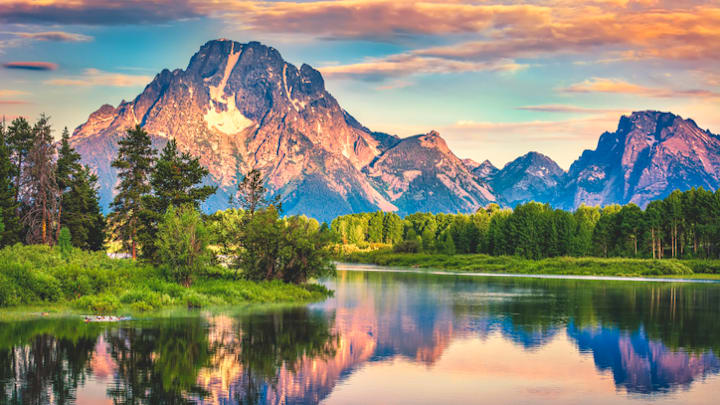Filmmakers Will and Jim Pattiz want to share their love of America’s national parks with the world. Their video series and website, More Than Just Parks, is dedicated to showcasing the beauty of our natural heritage and encouraging conservation of public lands. The brothers aim to produce a short film about each of the 63 national parks in the United States, with eye-popping videos from Redwood National Park in California, Zion National Park in Utah, and Acadia National Park in Maine already viewable on YouTube. The film below explores the mountains, forests, and rivers of Wyoming’s Grand Teton National Park in a series of gorgeous time-lapse sequences.
To make their Grand Teton time-lapse, the brothers spent almost a month hiking through the park collecting footage. Their video features the park’s most stunning landscapes: There are sparkling glacial lakes, breathtaking sunsets, and mountains disappearing into clouds, as well as a few cameos from the park’s animal inhabitants, including grizzly bears and moose.
Grand Teton National Park was first established in 1929 to protect the high peaks of the Grand Teton Mountains and its glacial lakes. In the 1930s and 1940s, President Franklin D. Roosevelt designated the Jackson Hole National Monument adjacent to the park, and oil scion John D. Rockefeller donated lands that he owned to the park service. The current boundaries of Grand Teton National Park were finalized in 1950, when the national monument and Rockefeller’s property were absorbed into the existing national park.
People have lived on the lands now encompassed by the park since the ice sheet retreated at the end of the last ice age, about 10,000 years ago. In the 19th century, white fur trappers, hunters, explorers, and “mountain men” traveled through the region, and white settlers began to build homesteads there following the 1862 Homestead Act. Today, more than 3 million people visit Grand Teton National Park every year.
A version of this story was published in 2016; it has been updated for 2024.
